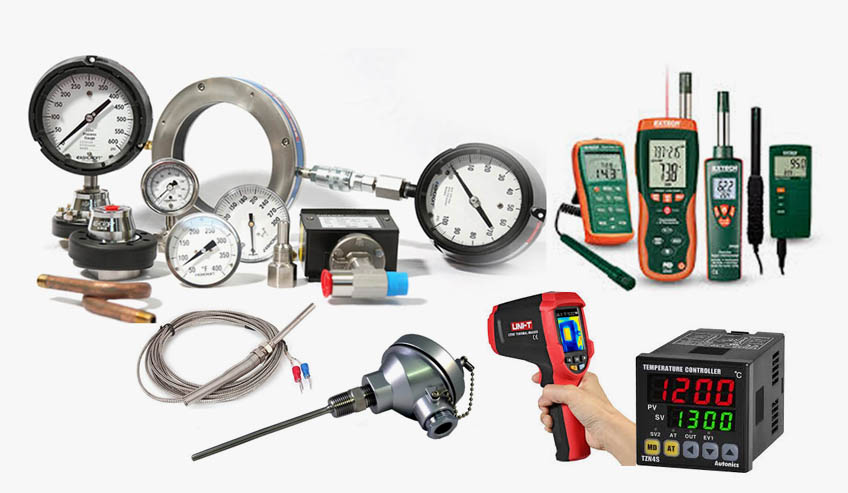Temperature Instruments
A temperature instrument is a device used to measure and monitor temperature in various applications. It is an essential tool in numerous industries, including manufacturing, healthcare, food processing, HVAC, and scientific research. Temperature instruments come in different types, each designed to measure temperature accurately in specific temperature ranges and environments. Here are some common types of temperature instruments:
1. Thermocouples:
Thermocouples are temperature sensors consisting of two different metal wires joined at one end. When there is a temperature difference between the joined end and the open end, it creates a voltage, which is used to determine the temperature. Thermocouples are widely used due to their durability, affordability, and wide temperature range capabilities.
2. Resistance Temperature Detectors (RTDs):
RTDs are temperature sensors made of a pure metal element, usually platinum. The electrical resistance of the RTD changes predictably with temperature, allowing accurate temperature measurements. RTDs are known for their high accuracy and stability, making them suitable for precise temperature applications.
3. Thermistors:
Thermistors are temperature sensors made of semiconductor materials, and their electrical resistance changes significantly with temperature. They come in two main types: Negative Temperature Coefficient (NTC) and Positive Temperature Coefficient (PTC) thermistors. NTC thermistors have a resistance decrease with temperature, while PTC thermistors have a resistance increase with temperature.
4. Infrared (IR) Thermometers:
Infrared thermometers use infrared radiation emitted by an object to measure its surface temperature. They are non-contact temperature instruments and are particularly useful for measuring temperatures of objects that are difficult to access or hazardous to approach.
5. Bimetallic Thermometers:
Bimetallic thermometers consist of a bimetallic strip made of two different metals with different coefficients of thermal expansion. When subjected to temperature changes, the bimetallic strip bends, and this movement is converted into temperature readings on a dial.
6. Liquid-in-Glass Thermometers:
Liquid-in-glass thermometers contain a liquid (typically mercury or alcohol) in a glass tube. As the temperature changes, the liquid expands or contracts, causing it to move along a scale and indicate the temperature.
7. Data Loggers and Temperature Recorders:
These instruments are used to record and log temperature measurements over time. They can be based on various temperature sensor technologies and provide valuable data for analysis and quality control.
8. Temperature Controllers:
Temperature controllers are devices that use temperature sensors to maintain a set temperature by controlling heaters, coolers, or other temperature-regulating equipment. They are commonly used in industrial processes and HVAC systems.
These are some of the main types of temperature instruments available. Choosing the appropriate type of temperature instrument depends on factors such as the required temperature range, accuracy, response time, and the specific needs of the application.
